Hot Summers in Nordic Apartments: Exploring the Correlation between Outdoor Weather Conditions and Indoor Temperature
Abstract
:1. Introduction
- To estimate the duration and intensity of indoor overheating during hot summers.
- To explore indoor temperature variations under different outdoor conditions.
- To determine the correlation between the outdoor temperature and solar radiation and indoor temperature levels during the during heatwaves of varying length in the hot summer of 2021.
- To quantify the magnitude of the effect of solar radiation and outdoor temperature on indoor temperature.
2. Materials and Methods
2.1. Indoor Temperature Data Collection and Preprocessing
2.2. Outdoor Weather during the Hot Summer of 2021
2.3. Statistical Analysis Methods
2.4. Overheating Assessment Criteria
3. Results
3.1. Temporal Analysis of Overheating Risks
3.2. Indoor Temperature Dynamics Based on Outdoor Weather Conditions
3.2.1. Indoor Temperature Variations Based on the Outdoor Average Temperature
3.2.2. Indoor Temperature Variations Based on the Sum of GHI
3.2.3. Indoor Temperature Variations Based on Weekly Number of Hot Days
3.3. Correlation between Indoor Temperature and Outdoor Weather Conditions
3.3.1. Outdoor Temperature
3.3.2. GHI
3.4. Multiple Linear Regression between the Indoor Temperature and Outdoor Weather Conditions
4. Discussion
5. Conclusions
Author Contributions
Funding
Data Availability Statement
Acknowledgments
Conflicts of Interest
References
- Arsad, F.S.; Hod, R.; Ahmad, N.; Ismail, R.; Mohamed, N.; Baharom, M.; Osman, Y.; Radi, M.F.M.; Tangang, F. The Impact of Heatwaves on Mortality and Morbidity and the Associated Vulnerability Factors: A Systematic Review. Int. J. Environ. Res. Public. Health 2022, 19, 16356. [Google Scholar] [CrossRef] [PubMed]
- Heino, M.; Kinnunen, P.; Anderson, W.; Ray, D.K.; Puma, M.J.; Varis, O.; Siebert, S.; Kummu, M. Increased probability of hot and dry weather extremes during the growing season threatens global crop yields. Sci. Rep. 2023, 13, 3583. [Google Scholar] [CrossRef] [PubMed]
- Dunne, J.P.; Stouffer, R.J.; John, J.G. Reductions in labour capacity from heat stress under climate warming. Nat. Clim. Chang. 2013, 3, 563–566. [Google Scholar] [CrossRef]
- Ruffault, J.; Curt, T.; Moron, V.; Trigo, R.M.; Mouillot, F.; Koutsias, N.; Pimont, F.; Martin-StPaul, N.; Barbero, R.; Dupuy, J.L.; et al. Increased likelihood of heat-induced large wildfires in the Mediterranean Basin. Sci. Rep. 2020, 10, 13790. [Google Scholar] [CrossRef] [PubMed]
- Mulholland, E.; Feyen, L. Increased risk of extreme heat to European roads and railways with global warming. Clim. Risk Manag. 2021, 34, 100365. [Google Scholar] [CrossRef]
- Klingelhöfer, D.; Braun, M.; Brüggmann, D.; Groneberg, D.A. Heatwaves: Does global research reflect the growing threat in the light of climate change? Glob. Health 2023, 19, 56. [Google Scholar] [CrossRef] [PubMed]
- Masson-Delmotte, V.; Zhai, P.; Chen, Y.; Goldfarb, L.; Gomis, M.I.; Matthews, J.B.R.; Berger, S.; Huang, M.; Yelekçi, O.; Yu, R.; et al. Climate Change 2021: The Physical Science Basis. Contribution of Working Group I to the Sixth Assessment Report of the Intergovernmental Panel on Climate Change; IPCC: Paris, France, 2021; Available online: https://www.ipcc.ch (accessed on 5 March 2024).
- Mikkonen, S.; Laine, M.; Mäkelä, H.M.; Gregow, H.; Tuomenvirta, H.; Lahtinen, M.; Laaksonen, A. Trends in the average temperature in Finland, 1847–2013. Stoch. Environ. Res. Risk Assess. 2015, 29, 1521–1529. [Google Scholar] [CrossRef]
- Ebi, K.L.; Capon, A.; Berry, P.; Broderick, C.; de Dear, R.; Havenith, G.; Honda, Y.; Kovats, R.S.; Ma, W.; Malik, A.; et al. Hot weather and heat extremes: Health risks. Lancet 2021, 398, 698–708. [Google Scholar] [CrossRef] [PubMed]
- Ballester, J.; Quijal-Zamorano, M.; Méndez Turrubiates, R.F.; Pegenaute, F.; Herrmann, F.R.; Robine, J.M.; Basagaña, X.; Tonne, C.; Antó, J.M.; Achebak, H. Heat-related mortality in Europe during the summer of 2022. Nat. Med. 2023, 29, 1857–1866. [Google Scholar] [CrossRef] [PubMed]
- Masselot, P.; Mistry, M.; Vanoli, J.; Schneider, R.; Iungman, T.; Garcia-Leon, D.; Ciscar, J.C.; Feyen, L.; Orru, H.; Urban, A.; et al. Excess mortality attributed to heat and cold: A health impact assessment study in 854 cities in Europe. Lancet Planet. Health 2023, 7, e271–e281. [Google Scholar] [CrossRef] [PubMed]
- Sohail, H.; Lanki, T.; Kollanus, V.; Tiittanen, P.; Schneider, A. Heat, heatwaves and cardiorespiratory hospital admissions in Helsinki, Finland. Int. J. Environ. Res. Public Health 2020, 17, 7892. [Google Scholar] [CrossRef] [PubMed]
- Kollanus, V.; Tiittanen, P.; Lanki, T. Mortality risk related to heatwaves in Finland–Factors affecting vulnerability. Environ. Res. 2021, 201, 111503. [Google Scholar] [CrossRef] [PubMed]
- Astone, R.; Vaalavuo, M. Climate Change and Health: Consequences of High Temperatures among Vulnerable Groups in Finland. Int. J. Soc. Determ. Health Health Serv. 2022, 53, 94–111. [Google Scholar] [CrossRef] [PubMed]
- Lomas, K.J.; Watson, S.; Allinson, D.; Fateh, A.; Beaumont, A.; Allen, J.; Foster, H.; Garrett, H. Dwelling and household characteristics’ influence on reported and measured summertime overheating: A glimpse of a mild climate in the 2050’s. Build Environ. 2021, 201, 107986. [Google Scholar] [CrossRef]
- Gupta, R.; Gregg, M. Assessing the Magnitude and Likely Causes of Summertime Overheating in Modern Flats in UK. Energies 2020, 13, 5202. [Google Scholar] [CrossRef]
- Maivel, M.; Kurnitski, J.; Kalamees, T. Field survey of overheating problems in Estonian apartment buildings. Archit. Sci. Rev. 2015, 58, 1–10. [Google Scholar] [CrossRef]
- Kotol, M.; Rode, C.; Clausen, G.; Nielsen, T.R. Indoor environment in bedrooms in 79 Greenlandic households. Build. Environ. 2014, 81, 29–36. [Google Scholar] [CrossRef]
- Farahani, A.V.; Kravchenko, I.; Jokisalo, J.; Korhonen, N.; Jylhä, K.; Kosonen, R. Overheating assessment for apartments during average and hot summers in the Nordic climate. Build. Res. Inf. 2023, 52, 273–291. [Google Scholar] [CrossRef]
- Li, W.; Zhou, Z.; Wang, C.; Han, Y. Impact of outdoor microclimate on the performance of high-rise multi-family dwellings in cold areas and optimization of building passive design. Build. Environ. 2024, 248, 111038. [Google Scholar] [CrossRef]
- Hou, Y.; Cao, B.; Zhu, Y.; Zhang, H.; Yang, L.; Duanmu, L.; Lian, Z.; Zhang, Y.; Zhai, Y.; Wang, Z.; et al. Temporal and spatial heterogeneity of indoor and outdoor temperatures and their relationship with thermal sensation from a global perspective. Environ. Int. 2023, 179, 108174. [Google Scholar] [CrossRef] [PubMed]
- Zuurbier, M.; van Loenhout, J.A.F.; le Grand, A.; Greven, F.; Duijm, F.; Hoek, G. Street temperature and building characteristics as determinants of indoor heat exposure. Sci. Total Environ. 2021, 766, 144376. [Google Scholar] [CrossRef] [PubMed]
- Nguyen, J.L.; Dockery, D.W. Daily indoor-to-outdoor temperature and humidity relationships: A sample across seasons and diverse climatic regions. Int. J. Biometeorol. 2016, 60, 221–229. [Google Scholar] [CrossRef] [PubMed]
- Nguyen, J.L.; Schwartz, J.; Dockery, D.W. The relationship between indoor and outdoor temperature, apparent temperature, relative humidity, and absolute humidity. Indoor Air 2014, 24, 103–112. [Google Scholar] [CrossRef] [PubMed]
- Peel, M.C.; Finlayson, B.L.; McMahon, T.A. Updated world map of the Köppen-Geiger climate classification. Hydrol. Earth Syst. Sci. 2007, 11, 1633–1644. [Google Scholar] [CrossRef]
- FMI. Record-Breaking Temperatures in May. FMI Press Release Archive. 2018. Available online: https://en.ilmatieteenlaitos.fi/press-release/539036550 (accessed on 17 February 2021).
- Corder, G.W.; Foreman, D.I. Nonparametric Statistics for Non-Statisticians: A Step-by-Step Approach; John Wiley & Sons, Inc.: Hoboken, NJ, USA, 2009. [Google Scholar]
- Hair, J.F. Multivariate Data Analysis; Kennesaw State University: Kennesaw, GA, USA, 2009. [Google Scholar]
- Lewis-Beck, M.S.; Skalaban, A. The R-Squared: Some Straight Talk. Political Anal. 1990, 2, 153–171. [Google Scholar] [CrossRef]
- Sheather, S.J. A Modern Approach to Regression with R; Springer Science & Business Media: Berlin/Heidelberg, Germany, 2009; pp. 4–28. [Google Scholar]
- Pedregosa, F.; Varoquaux, G.; Gramfort, A.; Michel, V.; Thirion, B.; Grisel, O.; Blondel, M.; Prettenhofer, P.; Weiss, R.; Dubourg, V.; et al. Scikit-learn: Machine Learning in Python. J. Mach. Learn. Res. 2011, 12, 2825–2830. [Google Scholar]
- Decree (1010/2017) of the Ministry of the Environment, Indoor Climate and Ventilation of New Buildings. 2017, pp. 1–16. Available online: https://ym.fi/en/the-national-building-code-of-finland (accessed on 5 March 2024).
- Kalamees, T.; Jylhä, K.; Tietäväinen, H.; Jokisalo, J.; Ilomets, S.; Hyvönen, R.; Saku, S. Development of weighting factors for climate variables for selecting the energy reference year according to the EN ISO 15927-4 standard. Energy Build. 2012, 47, 53–60. [Google Scholar] [CrossRef]
- Ministry of Social Affairs and Health. Decree of the Ministry of Social Affairs and Health on Health-related Conditions of Housing and Other Residential Buildings and Qualification Requirements for Third-party Experts, 545/2015. 2015. Available online: https://www.finlex.fi/en/laki/kaannokset/2015/en20150545 (accessed on 5 March 2024).
- Standard SFS-EN 16798-1; Part 1: Indoor Environmental Input Parameters for Design and Assessment of Energy Performance of Buildings Addressing Indoor air Quality, Thermal Environment, Lighting and Acoustics. Finnish Standards Association SFS: Helsinki, Finland, 2019. Available online: https://www.ds.dk (accessed on 5 March 2024).
- Chen, M.; Farahani, A.V.; Kilpeläinen, S.; Kosonen, R.; Younes, J.; Ghaddar, N.; Ghali, K.; Melikov, A.K. Thermal comfort chamber study of Nordic elderly people with local cooling devices in warm conditions. Build. Environ. 2023, 235, 21–24. [Google Scholar] [CrossRef]
- Kosonen, R.; Kurnitski, J.; Jokisalo, J.; Kilpeläinen, S.; Farahani, A.V.; Ejaz, M.F.; Simson, R.; Kollanus, V.; Lanki, T.; Tiittanen, P.; et al. Ilmanvaihto- ja Jäähdytysjärjestelmien Resilienssi Lämpöaaltojen ja Hengitystieinfektioiden Suhteen: Uudis- ja Korjausrakennusten Teknisten Ratkaisujen Toiminta Muuttuvissa Olosuhteissa. 2023. Available online: https://julkaisut.valtioneuvosto.fi/handle/10024/165209 (accessed on 5 March 2024).

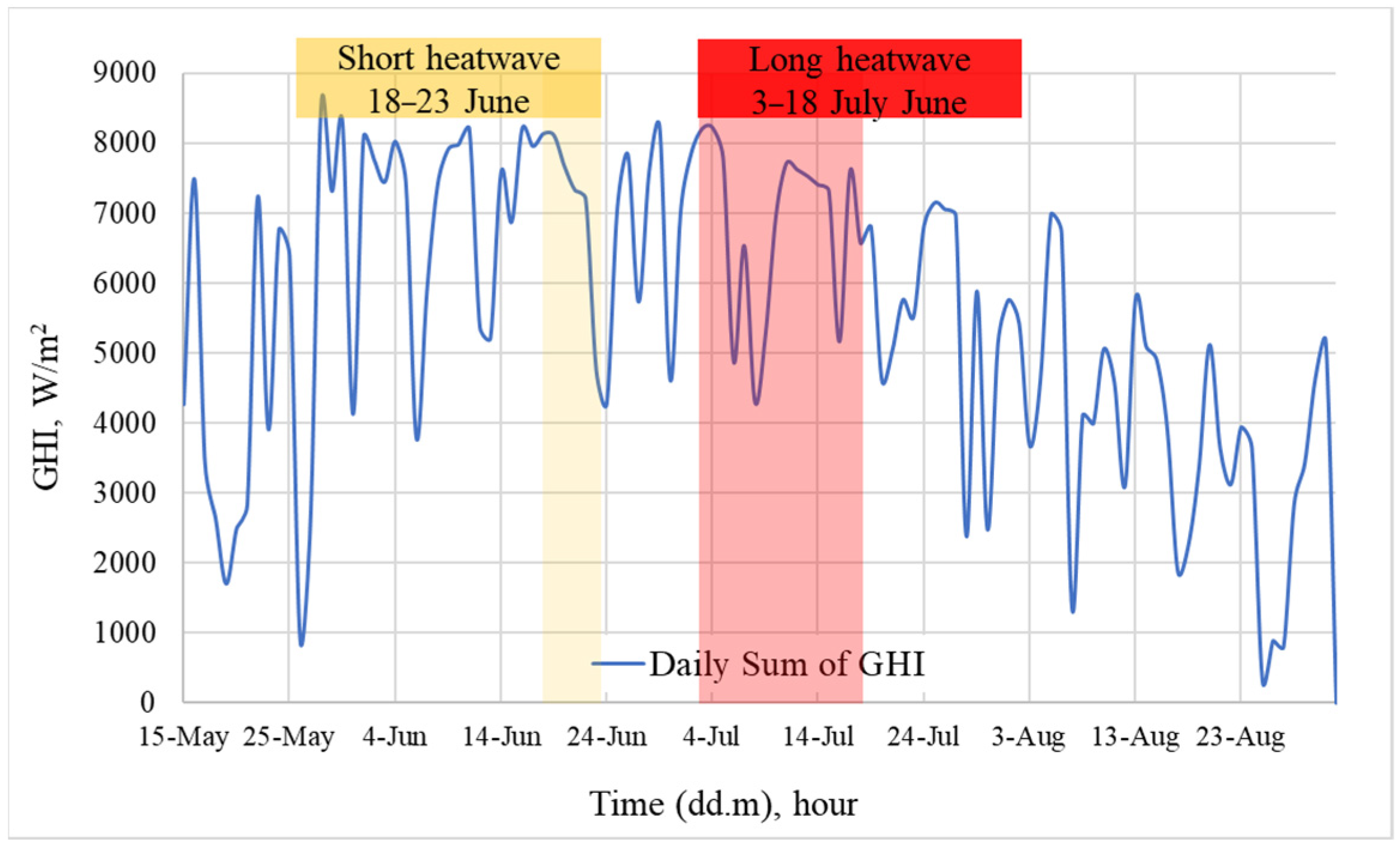
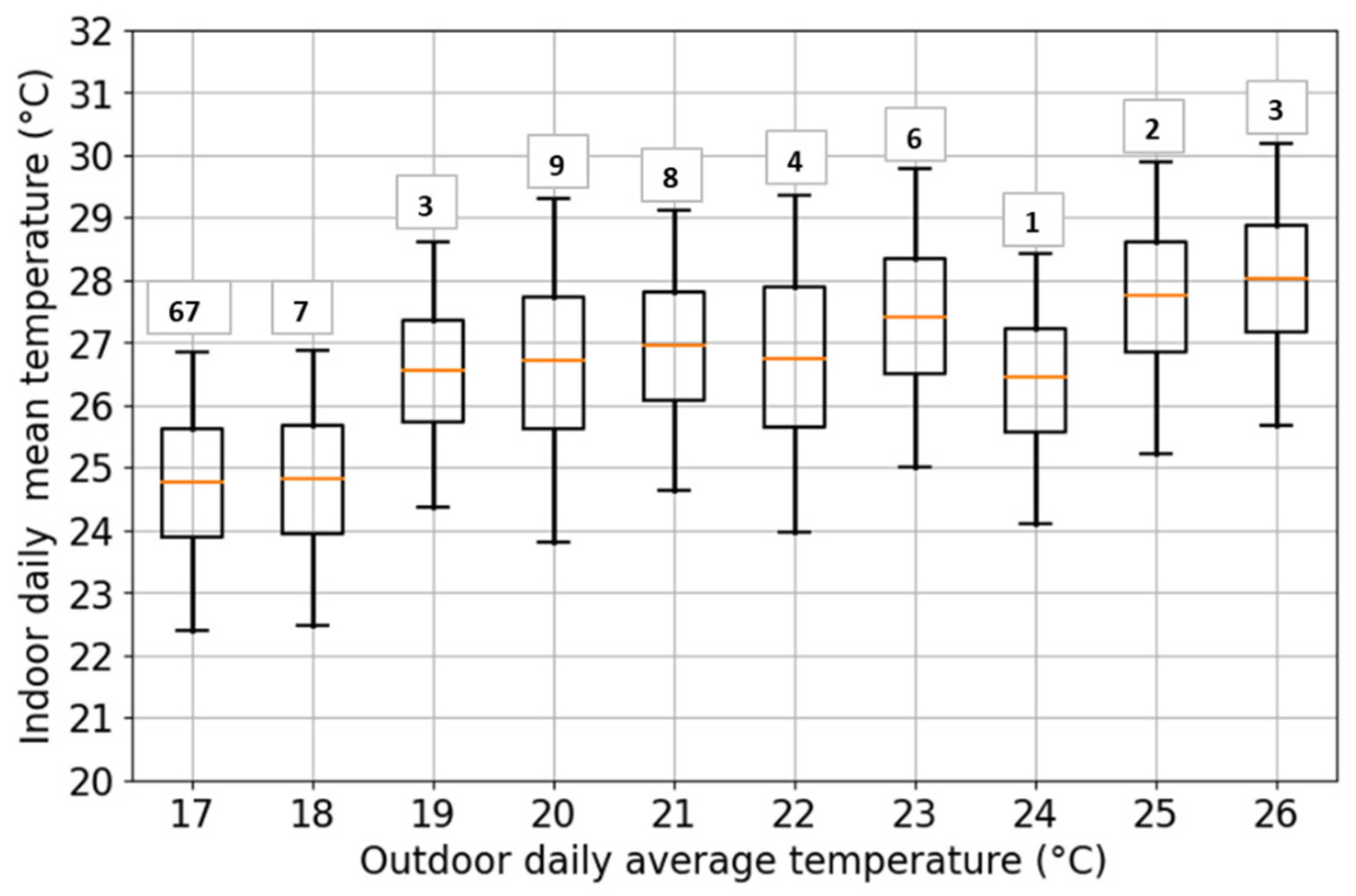



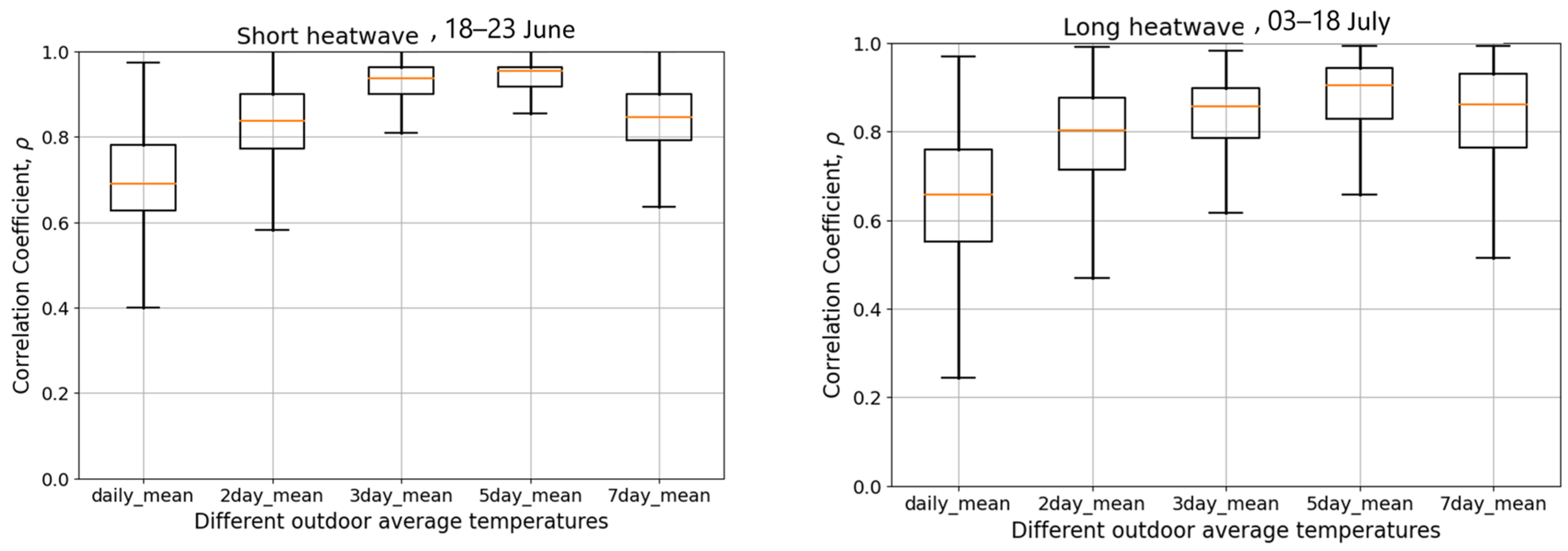

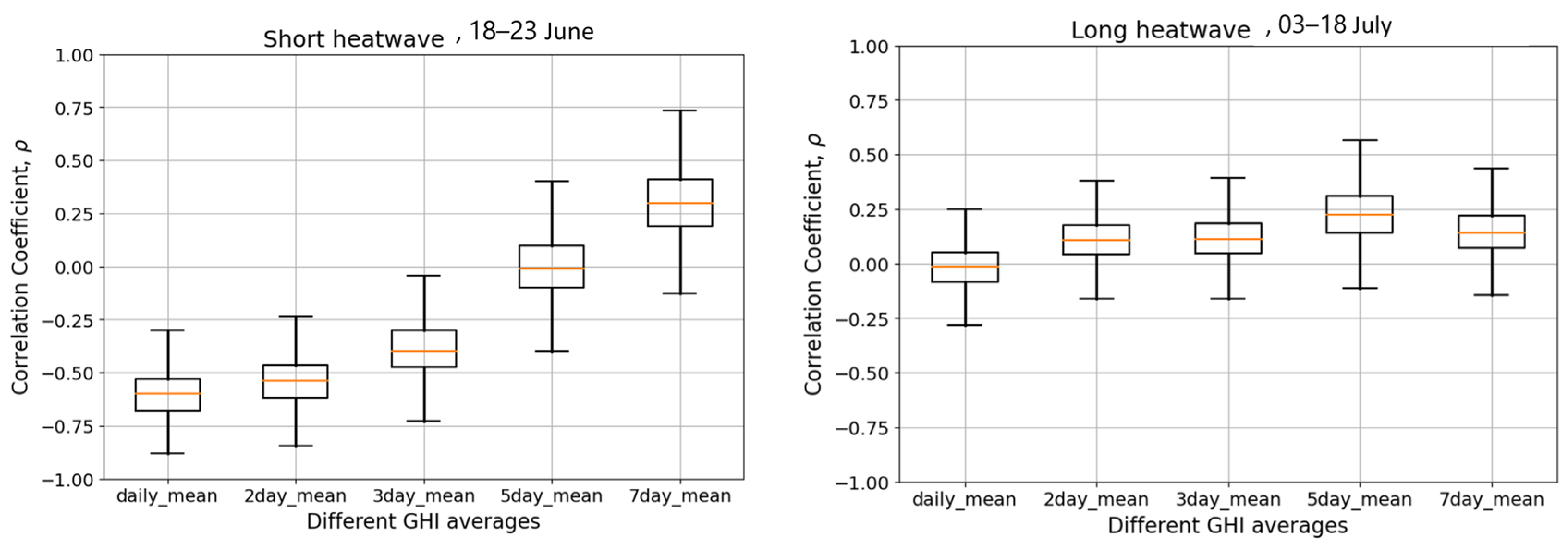
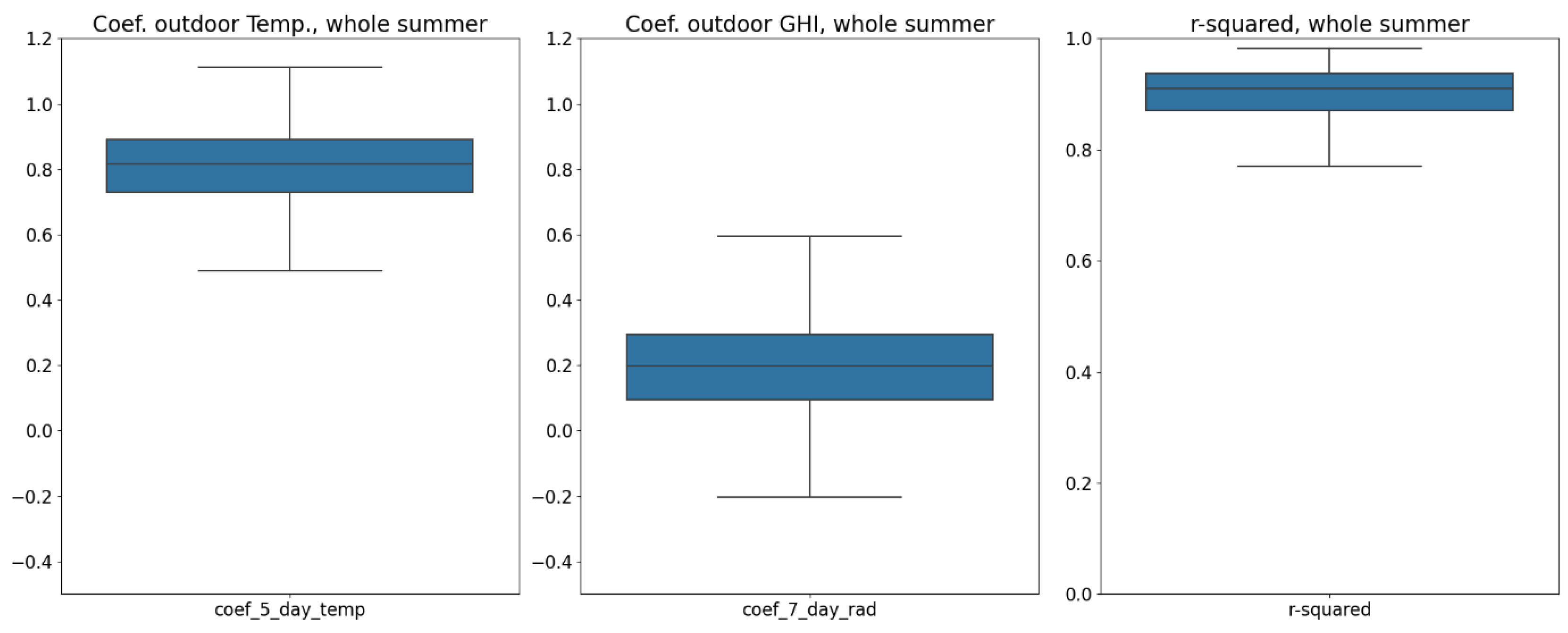
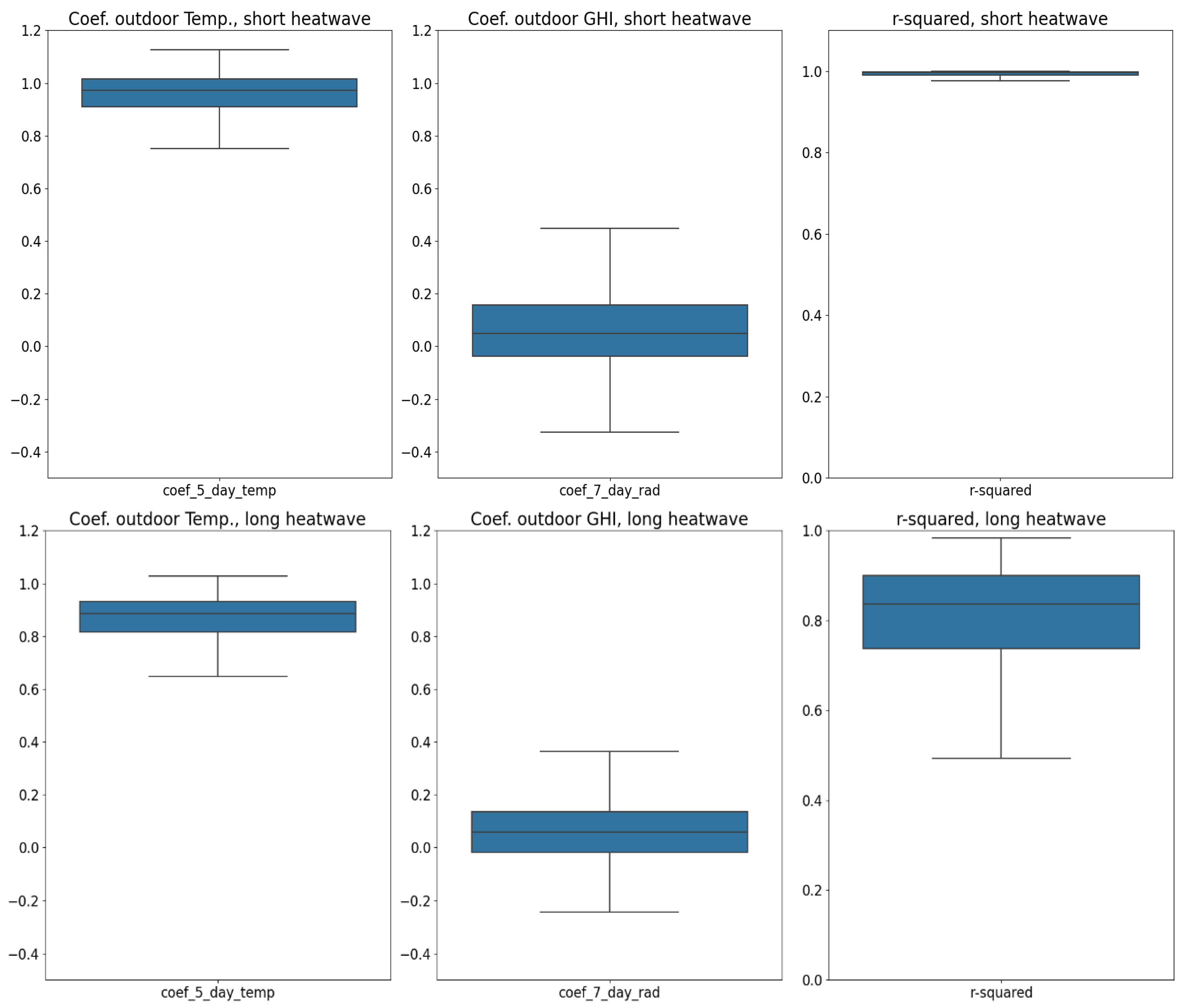
| Percentage (%) of Apartments with | ||||||||
|---|---|---|---|---|---|---|---|---|
| 1 Day | 2 Days | 3 Days | 4 Days | 5 Days | 6 Days | 7 Days | ||
| Hourly temperature higher than | 27 °C | 84.8 | 77.9 | 69.8 | 61.0 | 55.1 | 50.0 | 46.8 |
| 28 °C | 59.6 | 48.8 | 40.2 | 32.7 | 26.2 | 21.5 | 19.2 | |
| 29 °C | 28.1 | 20.9 | 15.8 | 11.8 | 8.8 | 6.2 | 5.3 | |
| 30 °C | 8.3 | 5.5 | 3.9 | 2.8 | 1.9 | 1.5 | 1.2 | |
| 31 °C | 1.8 | 1.3 | 0.9 | 0.6 | 0.3 | 0.2 | 0.2 | |
| 32 °C | 0.4 | 0.3 | 0.2 | 0.2 | 0.1 | 0.1 | 0.1 | |
| 33 °C | 0.1 | 0.1 | 0.1 | 0.1 | 0.1 | 0.0 | 0.0 | |
| 34 °C | 0.05 | 0.05 | 0.05 | 0.05 | 0.05 | 0.0 | 0.0 | |
| 35 °C | 0.05 | 0.03 | 0.03 | 0.03 | 0.03 | 0.0 | 0.0 | |
Disclaimer/Publisher’s Note: The statements, opinions and data contained in all publications are solely those of the individual author(s) and contributor(s) and not of MDPI and/or the editor(s). MDPI and/or the editor(s) disclaim responsibility for any injury to people or property resulting from any ideas, methods, instructions or products referred to in the content. |
© 2024 by the authors. Licensee MDPI, Basel, Switzerland. This article is an open access article distributed under the terms and conditions of the Creative Commons Attribution (CC BY) license (https://creativecommons.org/licenses/by/4.0/).
Share and Cite
Farahani, A.V.; Jokisalo, J.; Korhonen, N.; Jylhä, K.; Kosonen, R. Hot Summers in Nordic Apartments: Exploring the Correlation between Outdoor Weather Conditions and Indoor Temperature. Buildings 2024, 14, 1053. https://doi.org/10.3390/buildings14041053
Farahani AV, Jokisalo J, Korhonen N, Jylhä K, Kosonen R. Hot Summers in Nordic Apartments: Exploring the Correlation between Outdoor Weather Conditions and Indoor Temperature. Buildings. 2024; 14(4):1053. https://doi.org/10.3390/buildings14041053
Chicago/Turabian StyleFarahani, Azin Velashjerdi, Juha Jokisalo, Natalia Korhonen, Kirsti Jylhä, and Risto Kosonen. 2024. "Hot Summers in Nordic Apartments: Exploring the Correlation between Outdoor Weather Conditions and Indoor Temperature" Buildings 14, no. 4: 1053. https://doi.org/10.3390/buildings14041053







